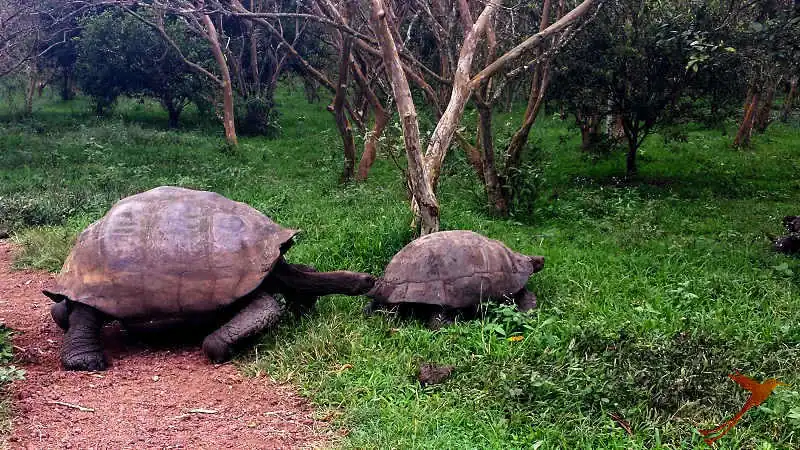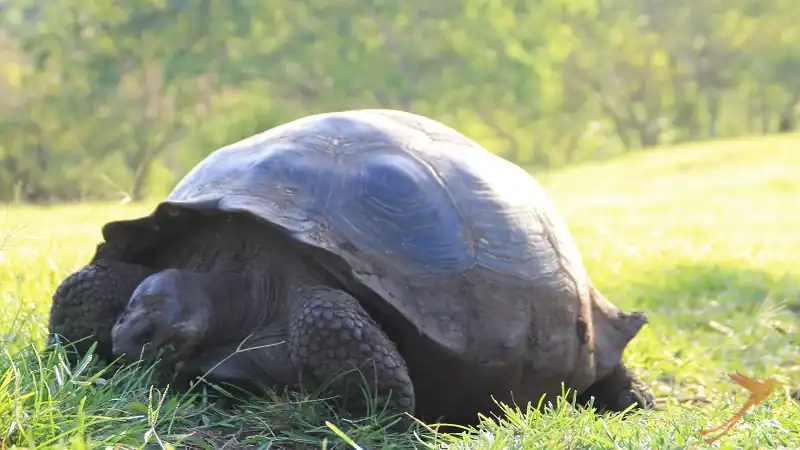
Diego, a giant tortoise of the species Chelonidis hoodensis, returns after 80 years to his home island Española, one of the uninhabited Galapagos Islands. In the 1930s Diego was brought to the USA on a scientific excursion and lived the following years in a zoo in San Diego, California, where he received his name.
Meanwhile, the population of his species and other tortoise species on Galapagos decreased considerably. This was due to various threats they faced over time. Firstly, there were pirates and whalers who took tortoise on their ships as food. As the Galapagos became more and more populated, goats also came to the islands, some of which ate away the turtles’ food. Rats threatened the young animals.
As a result, the population shrank enormously: from an estimated 400,000 individuals of 15 turtle species, there were only about 15% left by the end of the 1960s. Three subspecies are completely extinct. In 1979 Diego was selected for a breeding program and brought to the Charles-Darwin Research and Breeding Station on Santa Cruz. There he produced over 800 offspring by the beginning of 2020 and is thus the sire of about 40% of the 1800 turtles reintroduced to Española.

Back on Española
On 15 June 2020, the giant tortoise Diego, which is now over 100 years old, was brought back to the Galapagos island of Española together with 14 other conspecifics – 12 females and 2 other males. Before that, however, the animals had to be put into quarantine. Here they were “cleaned” internally and externally in order to prevent seeds of plant species not native to Española from being introduced into the island.
One brought the turtles with boats to the island. There park rangers and scientists carried them 2.5 km into the interior of the island to a place called Las Tunas. Here they finally released them into the wild. At this place there are plenty of opuntias, the cactus species, which is the main food of this turtle species.
The turtles were each equipped with a microchip to monitor them by satellite. In six months a research trip is planned to check their condition and development.
Nature and animal protection on Galapagos
The presence of turtles in Española is important for the island’s ecosystem. If they are not there, woody plants spread very quickly and leave no space for nesting birds. Certain species of birds, such as albatrosses, need certain conditions to land or fly. The turtles create these free spaces.
The giant tortoise Diego has done much to preserve his species and stabilize the ecosystem of the Galapagos island of Española. Nevertheless, it is important to note that not all specimens are descended from him. This is the only way to maintain or increase healthy genetic diversity.
Therefore, the protection of nature and species remains an important issue for the island of Española. This also applies to the other Galapagos Islands. Therefore, tourism on the islands should still be carried out gently. Every visitor should therefore always follow the regulations of the National Park. You can also read more in our blog post about the Charles Darwin Research Center. By the way, you can visit it on numerous Galapagos cruises or when you go island hopping on Santa Cruz.








